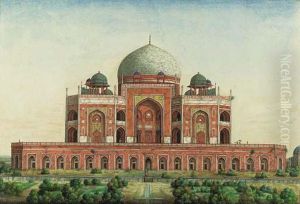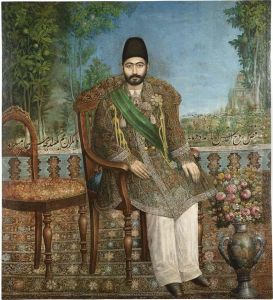Ghulam Ali Khan Paintings
Ghulam Ali Khan was an Indian painter who is known for his work during the late Mughal period of India's history. Information about his early life is scarce, and much of what we know about Ghulam Ali Khan comes from the work he left behind. He was part of a family of artists and came from a lineage of court painters. His career flourished during a time of political upheaval and the decline of the Mughal Empire, which had been a longstanding patron of the arts.
Ghulam Ali Khan worked in Delhi and is often considered the last royal Mughal painter. He and his family witnessed the transition of power from the Mughal rulers to the British Raj. During this period, Ghulam Ali Khan managed to adapt to the changing tastes and political circumstances by working for a variety of patrons, including British officials who wanted their experiences in India recorded in the form of paintings.
In the 1830s, he was commissioned by Sir Thomas Metcalfe, a British colonial official, to work on an album called the 'Reminiscences of Imperial Delhi', which included a series of watercolors depicting monuments and scenes from Delhi life. These paintings are invaluable records of the historical and cultural context of the time, capturing the appearance of the city before the transformations brought about by later British urban planning and the devastation of the 1857 Rebellion.
Ghulam Ali Khan's style combined traditional Mughal elements with new influences that arrived through British colonial presence. He incorporated Western techniques of shading and perspective, which were uncommon in Indian painting until that time, and his work is characterized by meticulous attention to detail and vibrant colors.
The decline of Ghulam Ali Khan's traditional patronage system due to the collapse of the Mughal Empire and the rise of the British East India Company led to a significant change in the production of art on the subcontinent. He adapted by taking on commissions that catered to British tastes and interests. Despite the challenges of his time, Khan's work remains a testament to the skill and adaptability of Mughal artists in a period of great change.
Ghulam Ali Khan's death in 1854 marked the end of an era for classical Mughal painting. His legacy continued through his artworks, which have been preserved in various collections, including those of the British Library and the Victoria and Albert Museum in London. These paintings provide insight into the cultural and historical context of 19th century India and stand as a bridge between the Mughal and British artistic traditions.

